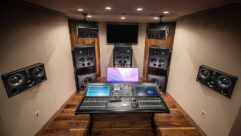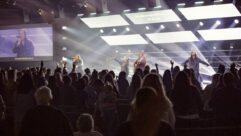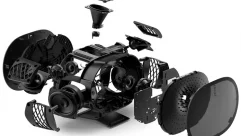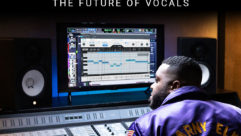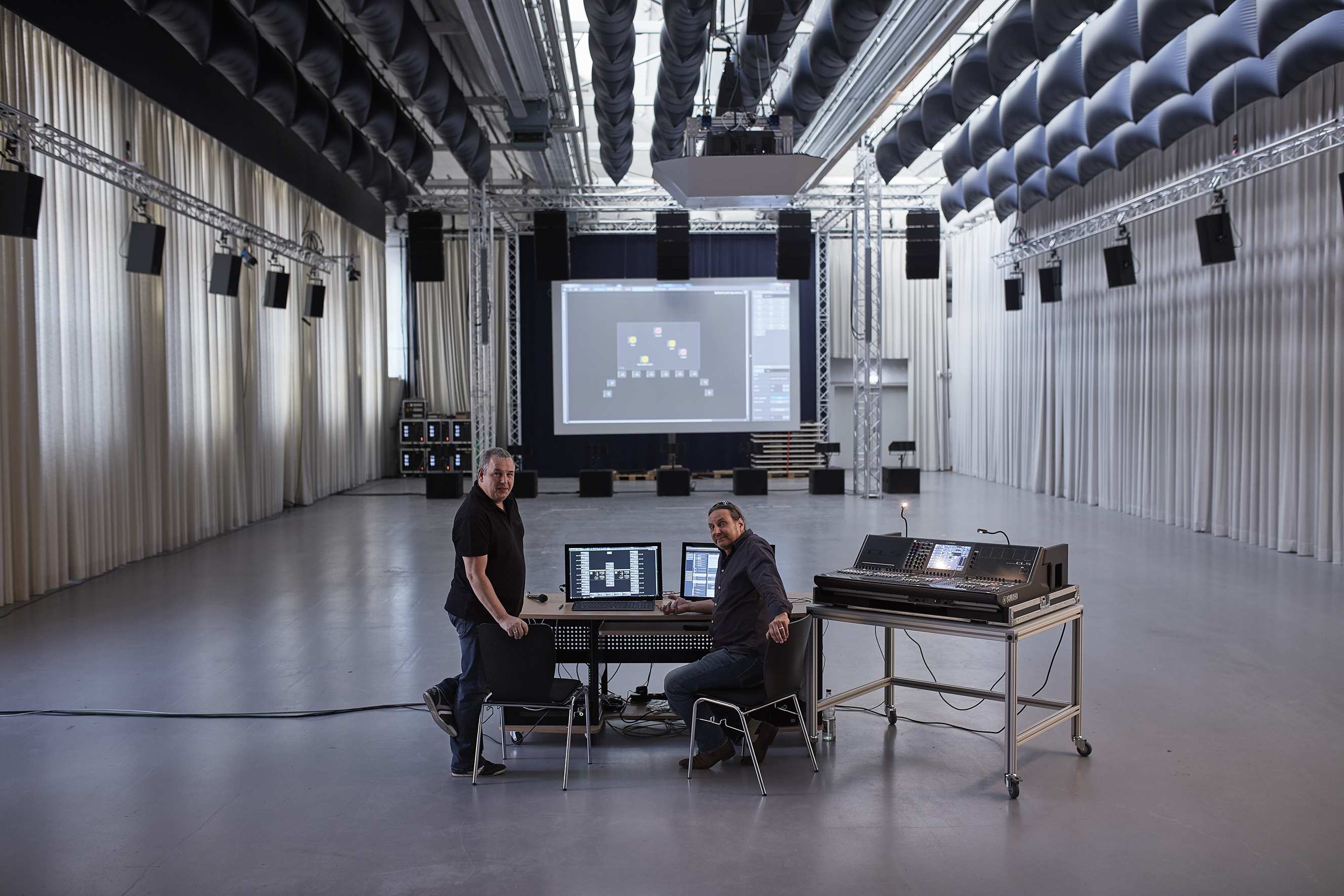
We’ve probably all got stories about room tuning tracks.
Here’s mine: If you visited the Amek booth in 1987 you might well have had the opportunity to mix a song or two from a multitrack tape copy of U2’s Joshua Tree album. The band had used an Amek desk to record at Danesmoate House in Dublin— indeed, I flew to Ireland to crate it up for its return journey to Manchester—and they generously allowed us to demo our gear using their tracks that year.
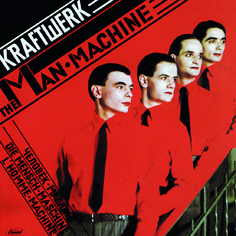
Although the record business has changed a great deal in the three decades since Joshua Tree was released, pro audio manufacturers are still sometimes able to get their hands on original recordings with which to show off their products. “It depends a little bit on the relationships we have with different musicians. I’ve got one track from Kraftwerk that we’re allowed to use: ‘Man-Machine.’ We’ve got the complete track, with video,” says Ralf Zuleeg, Sales Services and Application Engineering, d&b audiotechnik. Zuleeg toured with Kraftwerk in 2014 with an early version of what would become the d&b Soundscape immersive system—one of the more challenging demos to execute. It takes much more than a stereo CD to demonstrate Soundscape, of course, so d&b has commissioned some custom tracks, Zuleeg also reports. Those tracks are available for d&b’s partners to download.
Speaking with several manufacturers, I discovered that, once upon a time, some companies had a recommended playlist for their sales staff to use as demo tracks and field engineers to use for room tuning tracks. “When I first started working for the company 28 years ago we had a list of CDs that we carried around that had a particular track for each one of the five products; it was a whole lot easier then,” recalls Bruce Hurst, Regional Sales Engineer, Bose Professional.
Nowadays, says Hurst, “It’s harder and harder to get people on your team to use the same tracks for everything. We’re a little bit more independently minded than we used to be.”
Format Matters
Of course, anyone can now carry a massive catalog of demo and room tuning tracks on his or her smartphone. But, rule number one when demonstrating a speaker system—no MP3 files. “There have to be guidelines,” says Peter Chaiken, Director, Recording Solutions at HARMAN International, who stipulates WAV files with a minimum resolution of 44.1 kHz/16 bits, played through a USB interface out of a computer.
You’d also better know where the WAV files came from, he says. “I’ve been in situations where I’ve played somebody’s WAV file and there’s something wrong. I’ll play that same song from my computer and hear something different; that WAV file was a copy of an MP3. So either you lift a track from a CD or get it from somebody you trust.”
Almost any disc in any CD player is going to be better than an unknown file on a computer, Chaiken argues. But when playing out of a computer, also be aware of the conversion, he advises. Are you coming out of the headphone jack? Is any sort of DSP engaged?
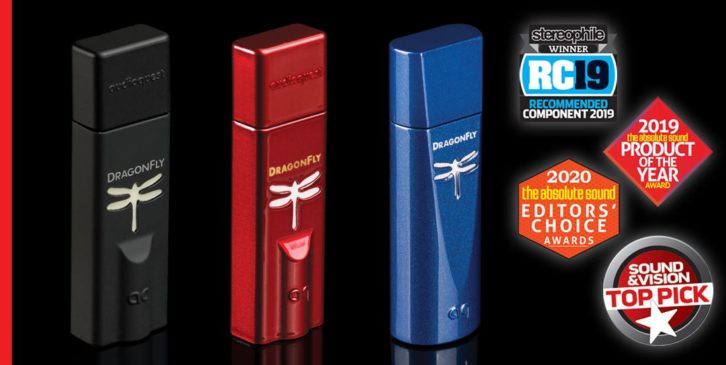
“One of our guys ran across a playback device called DragonFly,” shares Hurst. Available from AudioQuest, the thumbdrive-size micro-DAC hooks into the USB or Lightning connector on any handheld or laptop to offer superior conversion when compared to the headphone output, and outperforms any computer soundcard, he says.
“You want your tracks to sound as good as possible,” agrees John Schauer, Product Manager, Yamaha Corporation of America. “I also look for tracks that aren’t fresh in the minds of the listeners. I want them to want to listen to something new and different.”
Typically, the idea is to guide the listener through a demo, building to a climax, while pointing out the product’s attributes along the way. “We want to take you on a journey. I want you to want to listen, lean in and hear it,” says Schauer.
“If you play a familiar song from the eighties or nineties and they start singing along, then you’ve lost them for the demo,” says Hurst. He will suggest that the listener takes notice of a particular musical aspect that highlights the product. “But if they already know the song then they’re not listening for that.”
We stipulate WAV files with a minimum resolution of 44.1 kHz/16 bits, played through a USB interface out of a computer.
But while the demonstrator will cue the listener to certain musical elements that make the speakers shine—listen to what happens in the chorus; hear how the background vocals seem to come from beyond the speakers—tracks are rarely selected to show off only one facet of a product. “The bottom line is, if you’ve got a track that shows off the high end of a speaker but doesn’t impress you in the low end then it’s not so useful,” says Chaiken.
Whether you’re listening to demo or room tuning tracks on an entry level or a premium speaker, he says, the same tracks should work if the speakers are built to the same philosophy. “The speaker should be neutral in the room and allow you to hear a lot of detail,” he says.
Zuleeg agrees that a good sound system should be able to reproduce everything. “I’ve never thought about having a particular track just to show the capabilities of the system in terms of low frequency reproduction, or something like that,” he says. His demo typically starts out with stripped-down arrangements and builds from there.
“We get much more complex with a four-piece band, then a big band, where we’re able to move instruments around. We go to classical and show them what the reverb does to classical music. We usually end up with a track from Nigel Stanford called ‘Cymatics.’ We recently bought the rights. We deal with completely immersive sound, so everything is flying around,” says Zuleeg.
LISTEN: Nigel John Stanford: Cymatics
Some Favorite Demo Tracks:
Although he is not as involved in stereo demonstrations, Zuleeg lists some favorite artists for demo material, including Jennifer Warnes, Steely Dan and Tears For Fears. Those tend to be older tracks, to be sure. But as he says, “Quality never goes out of style. And I usually play a piece from Pink Floyd’s The Wall,” which is now 40 years old, or something from the Eagles’ Hell Freezes Over live comeback album. Beyond that, Zuleeg favors music by Robbie Robertson or Norway’s Kari Bremnes, he reports.
“One of my favorite tracks to start off with is a live a capella track from the Wailing Jennies, a Canadian group,” says Hurst.“They do a version of ‘Summertime’ on Live at the Mauch Chunk Opera House that’s pretty breathtaking.”
Another favorite is Bonnie Raitt, he says, not only for her distinctive voice but also the instrumentation and song arrangements. “Not Cause I Wanted To” from Raitt’s Slipstream album also shows up any low frequency limitations in a system, he says.
“The bass does a lot of walkdown parts. If he’s using the low B string on that five-string bass, which is 30 Hz, and you don’t hear it, then your system doesn’t go that low,” says Hurst. “If it’s consistent all the way down then your system extends quite nicely down to those lower frequencies.”
Hurst reports that a friend turned him onto a Toto song that he hadn’t previously heard, “I Will Remember.” “It starts with this great drum impact, then a big, fat, low bass, and everything sits right on top of that,” he says, and never fails to impress. “When you do a demo, you want them to go, ‘Wow!’”
Then there are the old standbys in room tuning tracks, says Hurst, including the almost obligatory Steely Dan, or Donald Fagen’s Morph the Cat album. “Anything by James Taylor is also pretty good,” he says, singling out “Jump Up Behind Me” from Hourglass for its bass guitar.
For jazz fans, anything by Diana Krall is a safe bet for, Hurst continues. “If they want a big band, Gordon Goodwin’s ‘Hit the Ground Running’ off Act Your Age is a well-produced track.”
If they want jazz but really want to hear guitar, in a similar vein to, say, Earl Klugh, he adds, “There’s a guy called Antonio Forcoine. The conga and percussion are great on his ‘Tears of Joy.’”
Marc Cohn, known for his “Walking in Memphis” hit single, has a deep cut worth a mention, Hurst continues. “He has a song called ‘Ghost Train.’ It gives you different things that you can point out—the percussion, the hi-hat, the click of the kick drum, the tambourine.”
The mantra at Bose is: the demo makes the sale, says Hurst. “You tell them what they’re going to hear, you let them hear it, then you reinforce it. What did you think of the bass guitar? What did you think of her voice? You evaluate whether they’re hearing what you ask them to hear.”
Another good vehicle for that approach is Bonnie Raitt’s cover of “Baby Mine,” a collaboration with Was (Not Was), from an album of interpretations of Disney classics. “It starts with a bass guitar walkdown, then slide guitar, organ, acoustic guitar. It builds, instrument by instrument. You can walk people through it and give them something to concentrate on.”
As pro audio innovator Cliff Hendrickson—once of Bose, among other manufacturers—used to say, “Play me voice,” Hurst recalls. “The same frequencies in the voice are in everything else. If it doesn’t sound balanced when there’s a voice, then it’s probably not going to sound balanced when you’re playing a track.”
A vocal track can also be very compelling, he says. “I have a track, ‘8th of November,’ off a Big & Rich album. Kris Kristofferson narrates the song’s introduction, which talks about one of the first black men to get a Medal of Honor. Through a good sound system, it stands out in front of your face.” It’s not unusual for listeners to seek out a copy after a demo, he says.
“I really love the new Diane Krall and Tony Bennett record,” says Schauer, listing some of his favorite demo material. “You close your eyes and it sounds like she’s right there in the room with you. And Tony is 90 years old and still singing. People take note and it adds to the fun of the demo. And if you want to listen to a piano properly, you want her playing it.”
Schauer, too, relies on some of the standbys: “Of course, any Steely Dan, such as Gaucho,” he says. Less well known, perhaps, is Polish singer-songwriter Basia. Her recordings are firm favorites among the staff at Yamaha, Schauer reports, and are go-to tracks when checking out new products. “Her songs are upbeat and very well produced. I like any of her stuff.”
For a bit of fun, he’ll pull out a copy of the Eagles’ Hell Freezes Over, which was released in 5.1 surround. “If you play it through a DTS decoder the center channel of ‘Seven Bridges Road,’ which is almost a cappella, is Joe Walsh by himself. He couldn’t carry a tune with a bucket. It’s the best; so fun,” he laughs.
Looking for another stripped-down choice sent Schauer back to the eighties: “I just recently dug up an old Linda Ronstadt song, ‘When You Wish Upon a Star.’ It’s so unprocessed, and when she decides to belt you get the dynamics.”
At the other end of the scale, and equally dynamic, are Schauer’s orchestral selections. “Anything with very wide dynamic range is great, particularly orchestral music from the movies, such as anything from Star Wars. There’s a record from Telarc, Erich Kunzel and the Cincinnati Pops Orchestra—I play ‘Also sprach Zarathustra’ [by Richard Strauss]. It has timpani in it, 35 Hz of noise buried in the track.”
You need to also be attuned to the location, observes Schauer. “Because our ears are so sensitive and can go into self-compression, I don’t want you to hear a 120-dB track until the end. But when you’re in a church, where there’s a lower dynamic range and there may be ears that are too sensitive to hear very bright, high-level sound, you have to be careful. Where you put the listener might decide whether they have a good or bad experience.”
Some Favorite Room Tuning Tracks
In his 17 years with HARMAN, Chaiken, who started out as a recording engineer at the Record Plant back in the day, has developed a playlist of room tuning tracks that not only shows off the company’s monitor speakers favorably but, perhaps more importantly, enable him to correctly set up a demo system. “We listen to these tunes very carefully, because they tell us what we need to know. If we get it right, they also turn out to be very good demo tracks,” he says.
When setting up a system at a tradeshow, for example, “We take a lot of care to set the speakers up to reproduce the material as expected,” he says. The room is in control of the low frequencies, he points out, while the speaker is in control of the mid and high frequencies. The aim, then, is to ensure the correct balance across the frequency range through correct positioning of the speakers and the elimination of resonances or standing waves.
“If I only had one tune to set up a speaker system it would be ‘Line ‘Em Up’ by James Taylor, from Hourglass, recorded and mixed by Frank Filipetti (for which he won a Grammy). There are some things I know about the record. Jimmy Johnson is playing a five-string bass, and Frank added a dbx subharmonic enhancer to some of the low frequency instruments on that album. The key point is, there’s enough room around the bass that I can hear the way the notes settle in. If the low B settles in right, then we’ve got it. If a note disappears or falls back, we’ve got work to do.
“Once Jimmy’s bass line falls into line and has authority, at all places in the tune, I can walk away from the system and know that it’s okay. All I’m trying to do is solve for the balance between low frequency, midrange and high frequency,” says Chaiken.
“When the bass instrument is in line musically then everything is working. Pay attention to the bass notes.”
At the opposite end of the spectrum is a track by Korn, also recorded and mixed by Filipetti. “As congested and as crazy as ‘Did My Time’ gets, you can hear everything in it. It’s got plenty of low end and is very demanding on the speakers.”
Chaiken will play almost anything by engineer and producer Al Schmitt, he says. For instance, “Diana Krall’s latest album is fabulous.”
For surround system room tuning tracks, he says, “Genius Loves Company [by Ray Charles, recorded by Schmitt] is probably the best 5.1 mix I’ve ever heard. You can stand anywhere and hear the mix.”
Engineer and producer Chuck Ainley gets a shout out for Vince Gill’s song “Pretty Little Adriana.” “That’s a beautiful tune. We have a little five-inch speaker that has some impressive low end and it’s a really good tune for that,” says Chaiken.
He reels off more favorite selections of room tuning tracks. Bonnie Raitt’s Nick of Time album, engineered and mixed by Ed Cherney, for the vocals. Aaron Neville’s “Louisiana 1927,” which features strings, as an example of engineer and producer George Massenburg’s work: “Absolutely beautiful,” says Chaiken. “And the low end is gorgeous.”
Steely Dan’s “Hey Nineteen” and “Moondance” by Van Morrison, both engineered by Elliot Scheiner, at opposite ends of his (ongoing) career, are also on Chaiken’s playlist. So too is Crosby & Nash’s “Lay Me Down,” recorded and mixed and co-produced by Nathaniel Kunkel. “Big, fat vocals, with real nice bass,” says Chaiken.
For room tuning tracks with horns and strings, he turns to Morton Lindberg and anything on his 2L record label. Chris Lord-Alge’s mixes on Green Day’s Boulevard of Broken Dreams album offer “a lot of rock tunes that people relate to,” he says.
“Those are the ones that I go to,” says Chaiken. “They’re not the ones that the young ‘uns want to hear, necessarily, I realize. But they help you to get a system to sound right. And once you’ve got it right, you can play symphonic, jazz or anything.”
While these veterans of the industry each have a long relationship with music that enables them to compile their ideal playlists of demo and room tuning tracks, at least one welcomes the opportunity to add new material. “A lot of manufacturers have great demo music; I discovered Sara Bareilles through a demo,” says Hurst. “If you go to a tradeshow and you don’t have your phone out with Shazam already loaded and ready, you’re missing out.”
The “Freebird” of Pro Audio for Room Tuning and Linecheck: By Clive Young
Years ago, I went to New York’s Beacon Theatre one morning to hear its new house system. Once there, we were faced with a quandary: what to listen to? The answer was to put on a song that’s become the “Freebird” of Pro Audio. A number of folks involved with the installation were there, including Tom Arrigoni, head audio engineer at Radio City Music Hall, and legendary FOH engineer Dave Natale (Rolling Stones, Tina Turner), who consulted on the project. We exchanged pleasantries and marveled at the 1920s opulence of the venue, but then we were faced with a quandary: what to actually listen to.
“What’s the name of that Donald Fagan song that everybody plays? I guess you have to hear that,” joked Dave.
“The Nightfly?” replied Tom
“The album’s Nightfly, but what’s the name of the song?”
“Oh, you mean ‘I.G.Y.’”
“I.G.Y!” Dave laughed.“Listening wouldn’t be complete without it!”
So “I.G.Y. (What A Beautiful World)” was called up on the laptop at FOH, and sure enough, the Beacon’s new system sounded excellent. Then, with the musical ice broken, people started adding their own favorites, and soon the playlist was ranging anywhere from power-pop bombast (Toy Matinee’s “Last Plane Out”) to sublime jazz (“I Remember Bill Evans” (excerpt) by David Benoit).
The moment was amusing, but it’s kind of true: Everyone does play “I.G.Y.” It’s become the “Freebird” of pro audio—visit a linecheck at a major concert venue or a speaker demo at AES or InfoComm, and those familiar strains will turn up sooner or later. It’s a well-recorded song, to be sure, which is why it’s always used to illustrate a system’s “tight low end” or “crystal-clear mids” or, to be honest, any other detail they want to point out.
However, the sheer pervasiveness of “I.G.Y.” within the pro-audio community as the track that you use to tune or show off your PA is remarkable. The distant second place song is, of all things, “Pulp Culture” from Thomas Dolby’s obscure (but admittedly awesome) 1989 funk album, Aliens Ate My Buick.
Bidding everyone adieu, I headed off to Long Island for my second assignment of the day—covering Roger Waters’ epic tour of Pink Floyd’s The Wall. On the train ride, I mused over the idea that a song from 1982 about 1957 would be considered the height of audio in 2010.
Maybe its days in that lofty position are numbered—there’s plenty of engineers who feel the best way to tune a system is to use a live recording of the band that’s playing. With the advent of the Virtual Soundcheck feature on Avid Venue consoles and similar abilities on other desks, pulling that off is a lot easier than it used to be.
Still, pseudo soundchecks ignore one crucial aspect of using a test song. While the whole point is to put on a piece of music that you know well so you can spot what’s wrong, deep down every engineer loves the chance to play something they love on what amounts to a massive stereo system. It reminded me of an interview I did in 2007 with Danny Leake, longtime FOH engineer for Stevie Wonder, where he revealed the surprising music he puts on to prep a system for an old fashioned, 1970s funk workout:
I test the system out with the soundtrack of Silverado which has the big drums, but it’s got the French horns. If I play that on the Martin system and hear all the details, I’m good. A lot of systems don’t pass the Silverado test, but to me it’s not enough to just have it loud and banging, a big bass or whatever; I gotta have details. I like it, I know it well, but it’s not the only one I use, like ‘Only A Dream In Rio’ by James Taylor—I used to use that on rap shows. If I play that and James Taylor sounds like an alien, got a weird voice, then I know something’s wrong. I use ‘Angel’ by Sarah McLachlan for a lot of vocal stuff, too, but generally the grand test is Silverado.
Eventually I got to Nassau Coliseum to cover The Wall, and began chatting with system engineer Bob Weibel. While we talked, FOH engineer/ Tour Manager Trip Khalaf fired up the system—and the first song he put on to tune the PA?
Take a wild guess.



